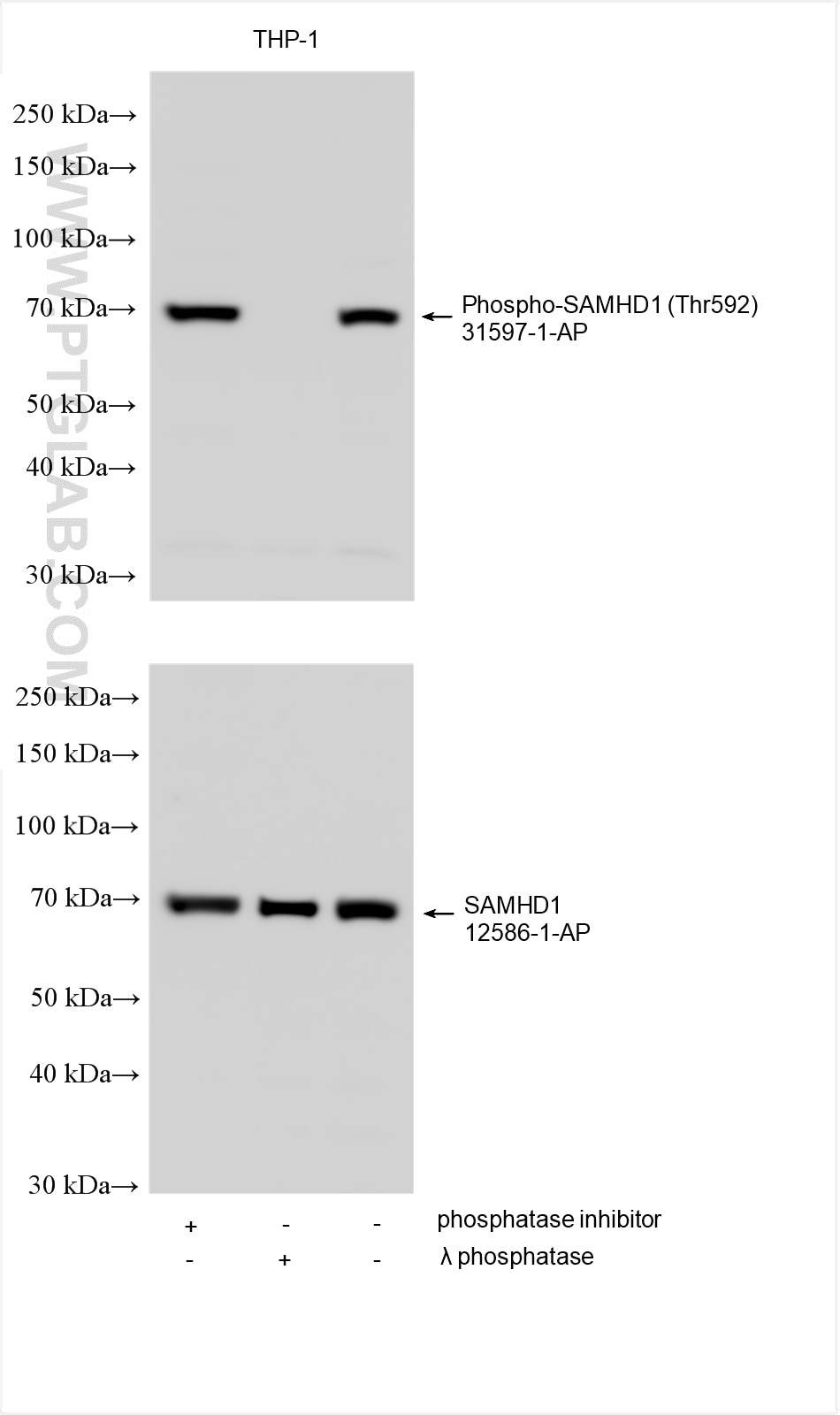Validation Data Gallery
Tested Applications
| Positive WB detected in | THP-1 cells, λ phosphatase treated THP-1 cells |
Recommended dilution
| Application | Dilution |
|---|---|
| Western Blot (WB) | WB : 1:500-1:2000 |
| It is recommended that this reagent should be titrated in each testing system to obtain optimal results. | |
| Sample-dependent, Check data in validation data gallery. | |
Product Information
31597-1-AP targets Phospho-SAMHD1 (Thr592) in WB, ELISA applications and shows reactivity with human samples.
| Tested Reactivity | human |
| Host / Isotype | Rabbit / IgG |
| Class | Polyclonal |
| Type | Antibody |
| Immunogen | Peptide 相同性解析による交差性が予測される生物種 |
| Full Name | SAM domain and HD domain 1 |
| Calculated molecular weight | 626 aa, 72 kDa |
| Observed molecular weight | 72 kDa |
| GenBank accession number | BC036450 |
| Gene Symbol | SAMHD1 |
| Gene ID (NCBI) | 25939 |
| Conjugate | Unconjugated |
| Form | Liquid |
| Purification Method | Antigen affinity purification |
| UNIPROT ID | Q9Y3Z3 |
| Storage Buffer | PBS with 0.02% sodium azide and 50% glycerol , pH 7.3 |
| Storage Conditions | Store at -20°C. Stable for one year after shipment. Aliquoting is unnecessary for -20oC storage. |
Background Information
SAMHD1 is a GTP/dGTP-activated deoxynucleotide triphosphohydrolase. Human SAMHD1 is a 626 amino acid protein comprising an N-terminal nuclear localisation signal, two major structural domains. SAMHD1 has been reported to have alternative nuclease and/or RNA binding activities that, dependent on the cellular circumstances, can also mediate restriction of HIV-1. In addition, restriction is regulated by Threonine 592 phosphorylation and removing this regulation may enable SAMHD1 to inhibit HIV-1 in cycling cells.
Protocols
| Product Specific Protocols | |
|---|---|
| WB protocol for Phospho-SAMHD1 (Thr592) antibody 31597-1-AP | Download protocol |
| Standard Protocols | |
|---|---|
| Click here to view our Standard Protocols |
